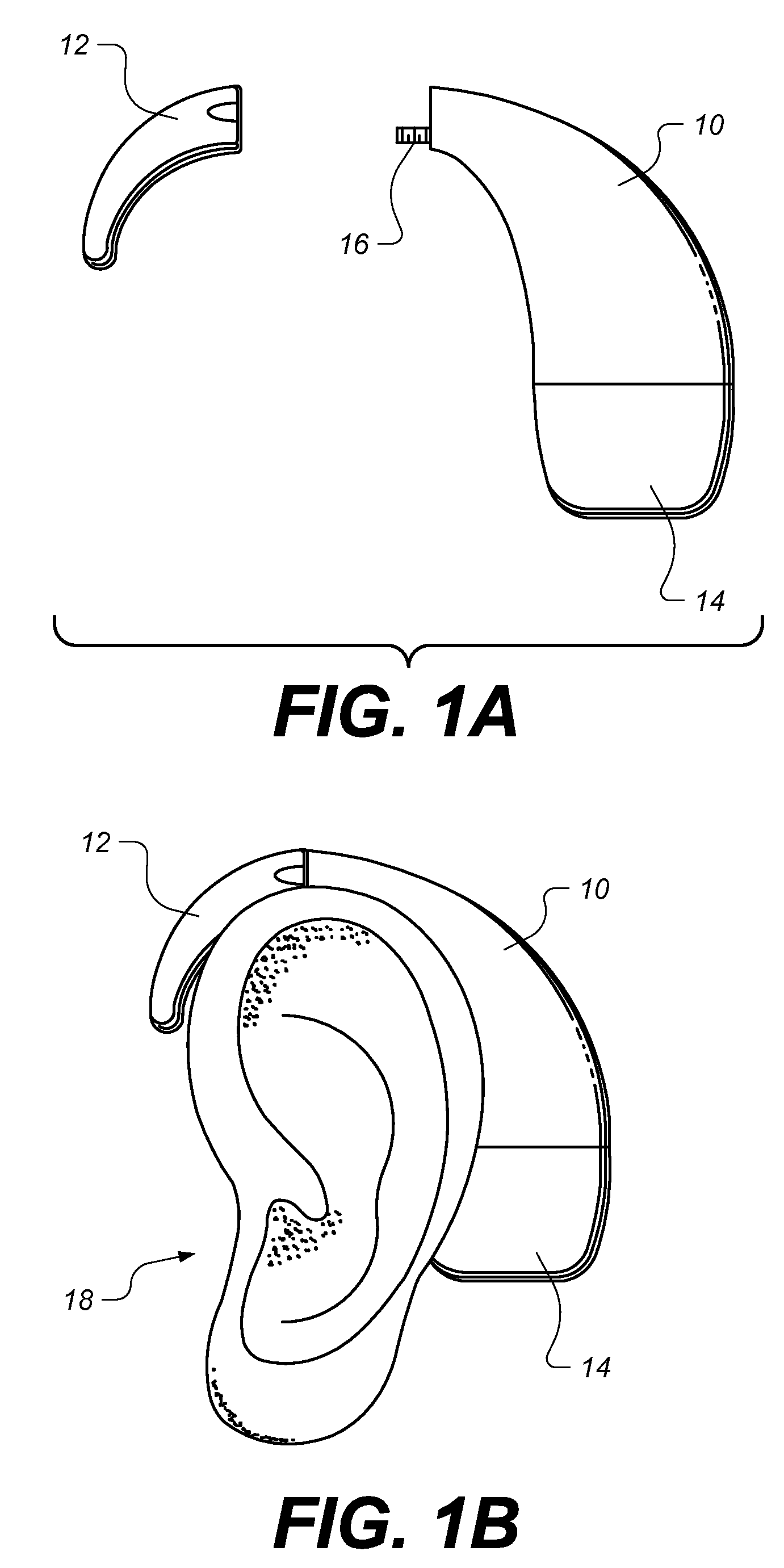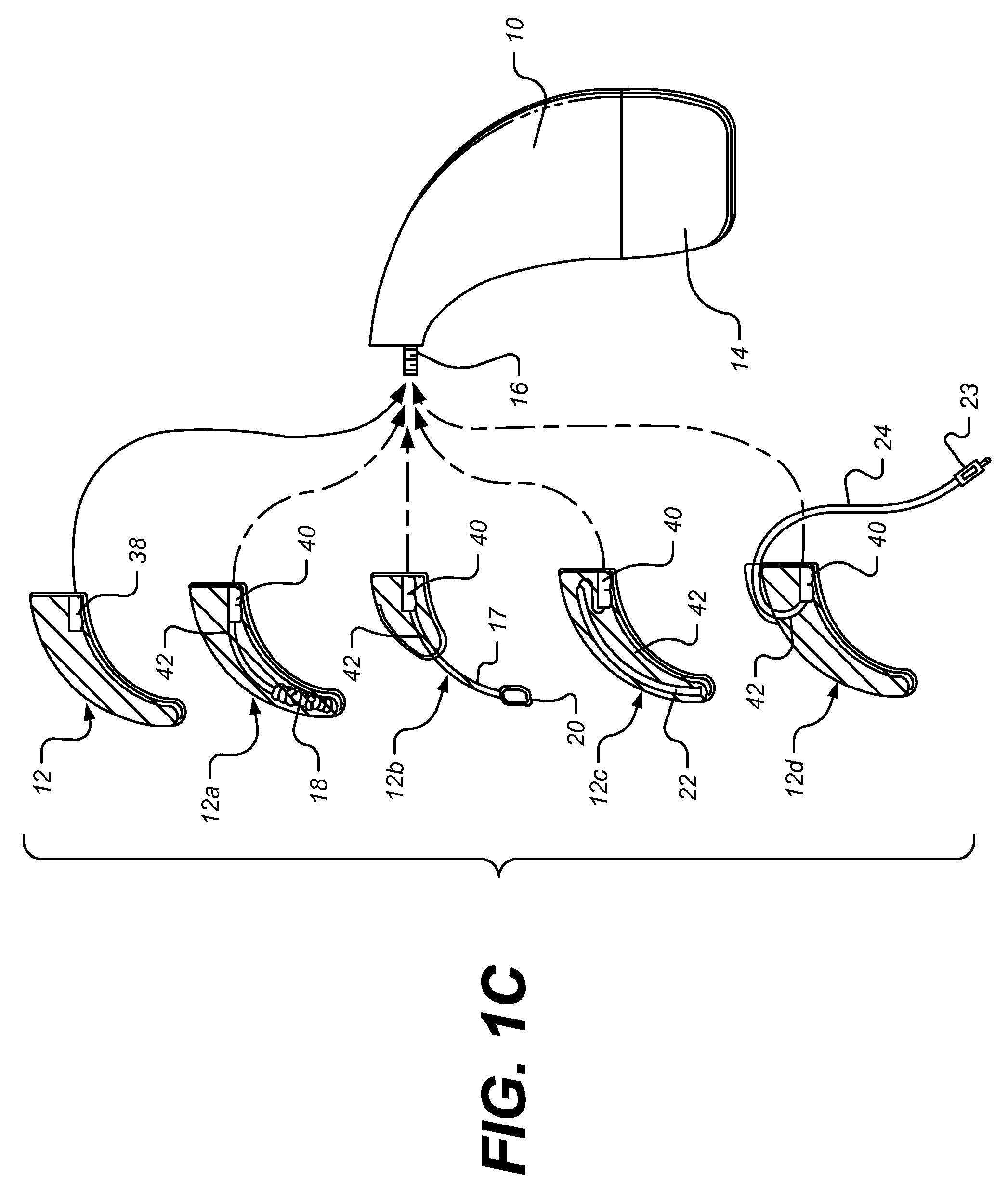Accessory adapter for cochlear implant system providing simultaneous T-mic and external audio input
a technology of cochlear implant and audio input, which is applied in the direction of behind the ear hearing aids, implantable hearing aids, stereophonic arrangments, etc., can solve the problems of not being able to connect the simultaneous direct connection of an external audio input and the t-mic, rarely if ever optimally position the built-in microphone, and affecting the operation of the t-mic, etc., to achieve the effect of total loudness
- Summary
- Abstract
- Description
- Claims
- Application Information
AI Technical Summary
Benefits of technology
Problems solved by technology
Method used
Image
Examples
Embodiment Construction
[0024]It is known in the art to use a Behind-The-Ear (BTE) processor or device with a Cochlear Implant (CI) system to provide a T-Mic option. A more detailed description of a BTE device may be found in U.S. Pat. No. 5,824,022, incorporated herein by reference. The T-Mic option, when used, places an external microphone in the concha of the ear near the opening of the ear canal. The T-Mic is fully described, e.g., in one or more of U.S. Pat. Nos. 6,748,094; 6,775,389; 7,020,298; 7,142,926; and 7,167,572; which patents are also incorporated herein by reference. It will be understood that a T-Mic may alternatively be referred to by any other name as may serve a particular implementation. Hence, “T-Mic” as used herein refers generally to any external microphone that is not incorporated into a headpiece (e.g., a microphone that may be placed in the concha of the ear near the opening of the ear canal).
[0025]A representative BTE device 10, used with a CI system, is illustrated in FIG. 1A. T...
PUM
 Login to View More
Login to View More Abstract
Description
Claims
Application Information
 Login to View More
Login to View More - R&D
- Intellectual Property
- Life Sciences
- Materials
- Tech Scout
- Unparalleled Data Quality
- Higher Quality Content
- 60% Fewer Hallucinations
Browse by: Latest US Patents, China's latest patents, Technical Efficacy Thesaurus, Application Domain, Technology Topic, Popular Technical Reports.
© 2025 PatSnap. All rights reserved.Legal|Privacy policy|Modern Slavery Act Transparency Statement|Sitemap|About US| Contact US: help@patsnap.com



